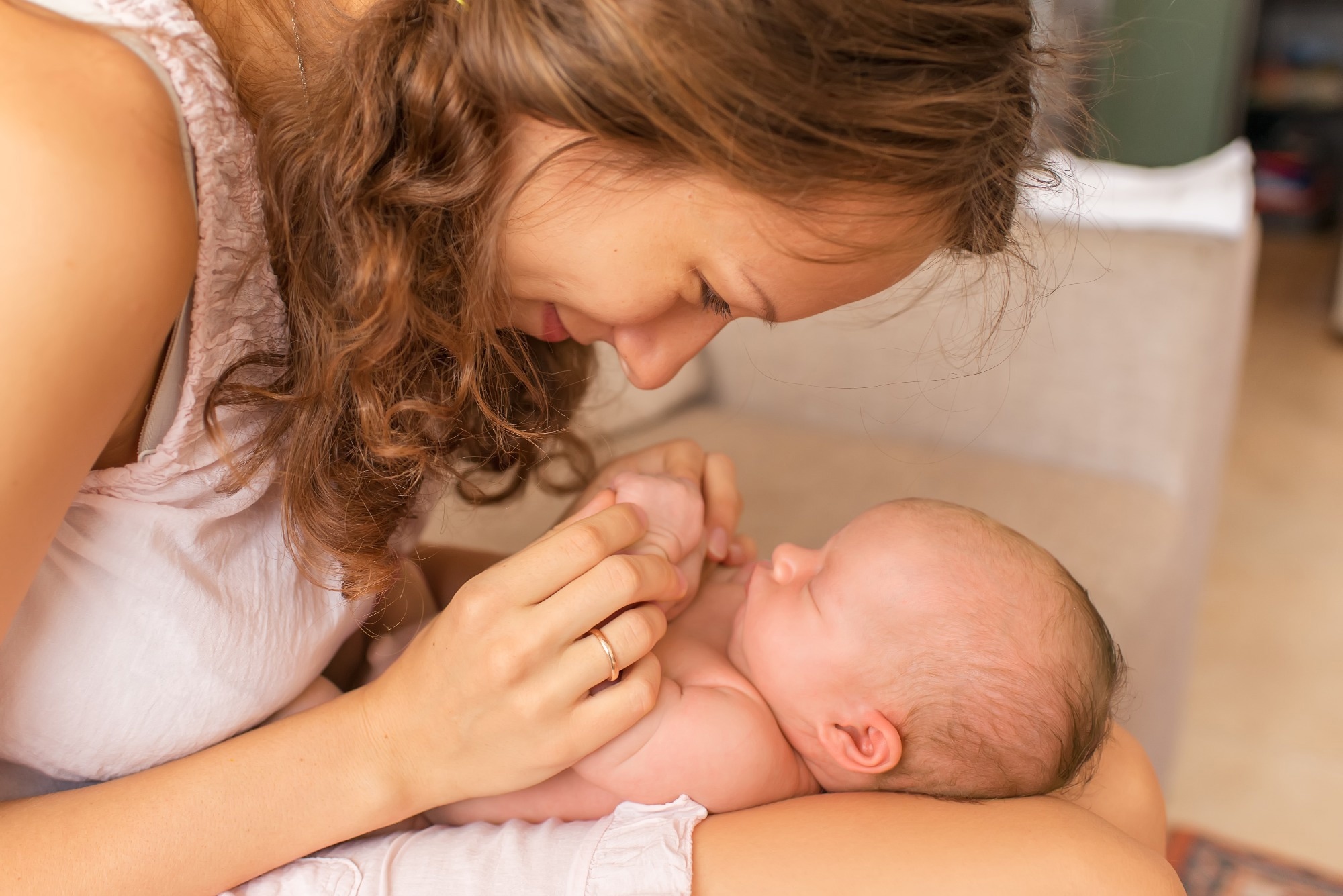A recent study including 60 infants was published in the Scientific Reports Journal, which investigated the trajectories of infant visual preference for the mother's face and how these are related to the development of emotional reactivity in the first year of life.
 Study: Infant visual preference for the mother’s face and longitudinal associations with emotional reactivity in the first year of life. Image Credit: Yulyazolotko/Shutterstock.com
Study: Infant visual preference for the mother’s face and longitudinal associations with emotional reactivity in the first year of life. Image Credit: Yulyazolotko/Shutterstock.com
Introduction
Infants prefer to look at faces that form part of the environment directed to them. Thus, faces that look happy and that look at them are typically preferred to strangers' faces.
These preferences may be beneficial in forming social tastes when presented to society, forming attachments to caregivers, and other early social interactions.
Little is known about the temporal development or finer details of how infants recognize and prefer their mothers' faces.
Some research suggests that only the infant recognizes the outer contour of the face. Moreover, the baby does not distinguish faces that look like the mother.
Thus, infants can recognize faces as they grow, pointing to improved perceptual development. Apart from this, cognitive and temperamental differences could also contribute to the differences seen by various researchers.
Thus, a longer look is associated with slower assimilation vs. faster learning with short looks, which gives babies with faster looks an advantage when processing information.
From existing literature, it seemed that babies would initially prefer to look at familiar faces but would later prefer novel faces. However, the age at which such a shift could be expected is unclear.
Little is known about how babies differ in these aspects and how these variations are linked to infant temperaments. The current study aimed to uncover the age at which preference shift occurs, if any, and how this is associated with infant temperament.
What did the study show?
The study included 60 children exposed in infancy to the mother's face vs. a stranger's face – the latter being the same for every child. Such exposures occurred at two weeks and four, six and nine months. A measure of infant temperament accompanied this.
The findings showed that infants looked equally at both faces at all times except six months. At this point, infants looked at their mother's faces markedly longer.
Such infants had better reactivity at nine months, as tested by the ability to bounce back after becoming distressed; that is, they had better-falling reactivity.
What are the implications?
As expected, infants gain discrimination in face perception over time, and older infants seem to prefer to look at novel visual stimuli, while younger babies prefer familiar stimuli, like the mother's face.
The lack of differences in preference at other ages may be due to minor alterations in experimental procedure between time points or personal changes.
The findings might indicate that infants use their attention span differently at different ages. However, at birth, two weeks and four weeks (one month), infants have significantly varying experiences and levels of maturation of the central nervous system, which complicates any analysis of these results.
At four months, there was a trend of looking longer at a stranger's face, though it did not achieve statistical significance. This could be because babies are now attempting to recognize novel stimuli, such as a stranger's face, using their attention to learn about it.
This could synchronize with the onset of stranger anxiety, for instance, when the older infant is separated from the mother.
The absence of any preference in this study at nine months could be due to using different resources, such as memory, or using an image rather than more complex stimuli, which the infant could prefer at older ages. Some researchers have suggested that infants who process the mother's face are more likely to show distress at six months old. This may indicate better emotional regulation in infants who look at their mothers longer at six months. Perhaps these babies soothe themselves when in distress by orienting towards their mothers.
Alternatively, this may be to learn how to react, thus assisting in gaining emotional self-regulatory skills.
Such findings suggest that both infant social attention development and the caregiver play a crucial role in the development of emotion regulation in the first year of life. "